Women in history are often glossed over but the truth is that the American Revolution would not have been won without the help of women.
Most of us are aware of the stories of prominent ladies during the Revolution, including Martha Washington and Abigail Adams.
However, many thousands of women did so much to ensure victory for the Continental Army. Sadly, though, most of their stories are lost to history.
While countless women worked for the cause of liberty, some women opposed separation from England.
Other women were thrust into the Revolution story as enslaved workers who didn’t have the autonomy to choose to be patriots, loyalists, or remain neutral.
My purpose in writing this blog post is to highlight the contributions of some of the lesser-known women of the Revolutionary-era.
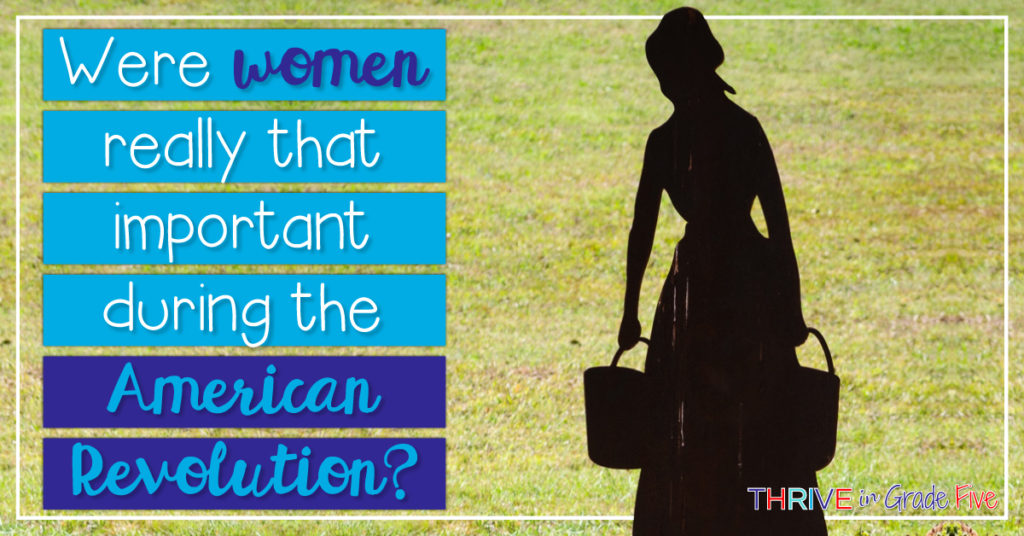
How did women contribute to the American Revolution?
Men were able to leave their farms and businesses because of the women who stayed behind and took over essential roles.
Some women contributed to the fight for independence by keeping family businesses afloat or serving as nurses to wounded soldiers.
Other women protested unfair taxes by spinning their own fabric and brewing liberty tea.
Read on to learn about some of the amazing women who have a place in our nation’s independence story!
Just in case you don’t make it to the bottom of this post, I want to offer you a free, quick project to use with your students. Type in your first name and email address below to receive the freebie right away. As a bonus, I’ll send you a weekly email to keep you updated on new freebies, blog posts, and upper elementary social studies/writing fun!
Who were the Daughters of Liberty?
Most of us know all about the Sons of Liberty but did you know there was a group called the Daughters of Liberty?
Pockets of women, known as Daughters of Liberty, began to pop up because women were fed up with unfair taxation policies forced on colonists by England.
While the Sons of Liberty were rioting, staging loud protests, and tarring/feathering tax collectors, the Daughters of Liberty were quietly protesting unfair taxes.
They organized boycotts on taxed items. When there were shortages of cloth, patriotic women banded together to spin wool and yarn into useable fabric. They made it a “fashion crime” to wear taxed cloth imported from England. Suddenly, homespun clothing was the “in” style.
Women were the main purchasers for their households, so the Daughters of Liberty encouraged all patriotic women to refrain from buying goods that required payment of a tax, like tea.
Tea was an important drink for colonists, so the women began to brew their own teas, which they lovingly called “Liberty Tea.” The tea was brewed from mint leaves, raspberry leaves, and other plants.
During our American Revolution Unit, I like to have a “Liberty Tea Party” in which students discuss whether or not to seek independence from England.
During the tea party, I split students into groups and give them a few questions to discuss.
They ultimately decide on independence or continued loyalty to England. I keep it super simple but my students love it. The Liberty Tea Party is one of their favorite events of the year!
These are the products I serve during the tea party. They are not fancy at all but students love that they get to drink raspberry tea just like the colonists!
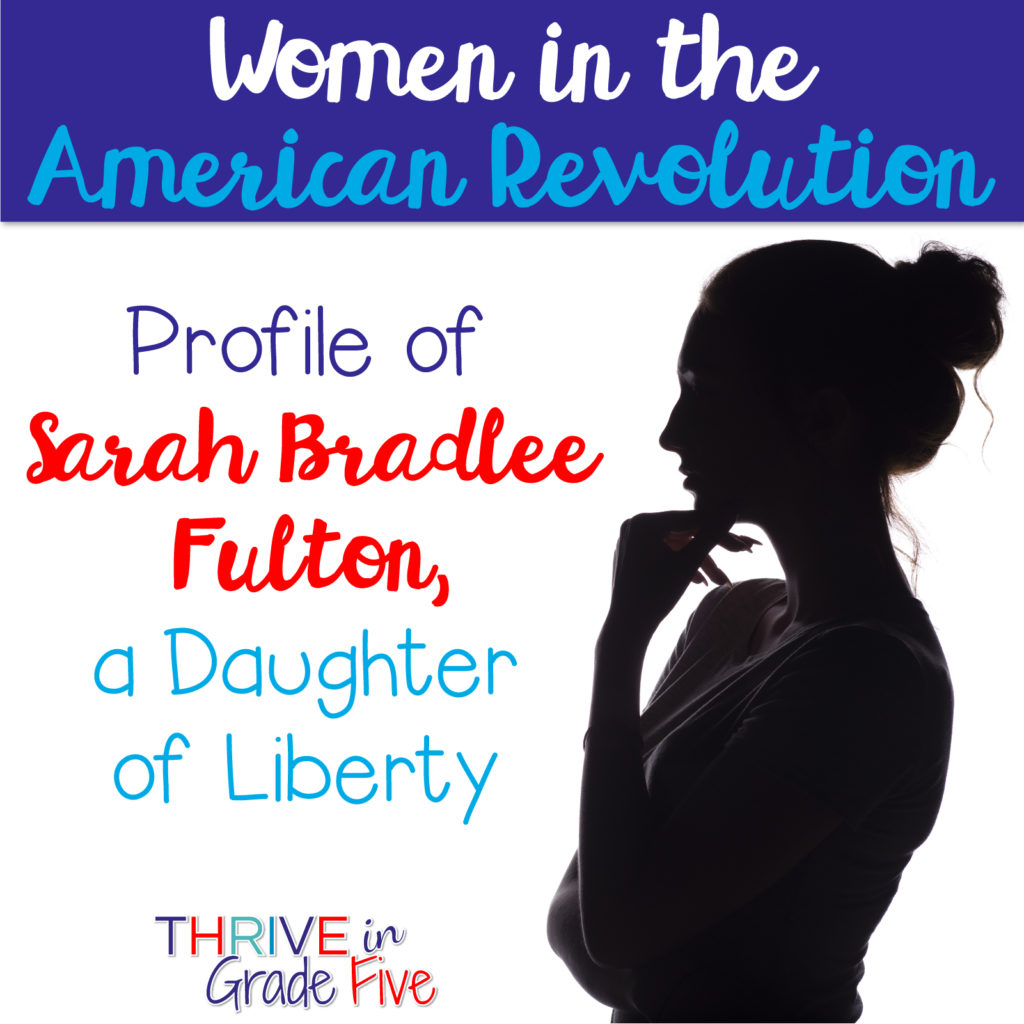
Profile of Sarah Bradlee Fulton
Sarah Bradlee Fulton was an active member of the Daughters of Liberty. I like to point out to students that Sarah earned a special nickname, “Mother of the Boston Tea Party.”
The Mohawk Indian disguises used by the tea party participants were Sarah’s idea. She encouraged the men to wear Native American clothing and paint their faces to hide their identities.
After the tea party, Sarah helped many of the men wash their faces clean and dispose of their clothing. Remember, the Sons of Liberty were a secretive organization, so removing all traces of participation in this major protest would be of the utmost importance.
Apart from her assistance during the Boston Tea Party, Sarah helped the patriot effort in other ways. She served as a nurse to wounded Continental soldiers and encouraged other women to do the same. She passed secret messages and bravely traveled through British lines.
Sarah Bradlee Fulton certainly made a difference as a Daughter of Liberty!
Loyalist Women During the American Revolution
Loyalist women don’t fit neatly into our American Revolution story.
Remember, history is written by the winning side.
Loyalist women were living out their beliefs. There’s no question that history would view them differently if the British had been victorious.
In our history books, loyalists are often portrayed as less-than-desirable people. But, honestly, let’s think about this for a minute… Would you have been a loyalist or a patriot?
Just knowing myself, I probably would have fallen into the neutral or loyalist camp because I don’t like fighting for the unknown. I prefer for things to stay the same.
As much as I admire the patriots who put it all on the line for the future of our country, I am just not brave like that!
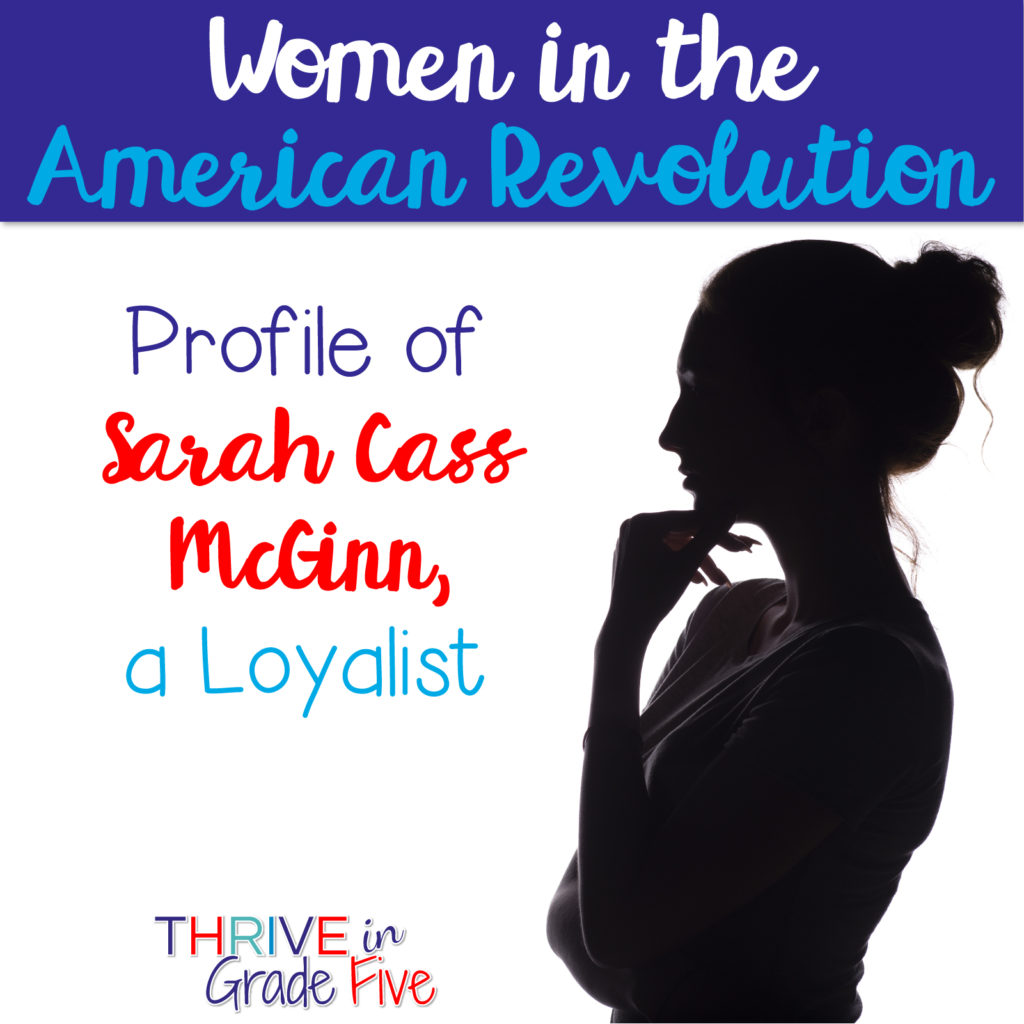
Profile of Sarah Cass McGinn
When we think of the American Revolution, loyalists are often an afterthought.
It sometimes takes students a while to realize that not every colonist was a patriot. Many, many colonists were loyalists or simply didn’t care either way (neutral) but their viewpoints matter.
Born in 1717, Sarah grew up in a loyalist family. As a young person, she befriended and began to spend time with people of the Iroquois nation. Her Native American friends welcomed her and allowed her to learn their customs and language.
Sadly, Sarah was widowed at around 38 years of age when her husband was killed serving in the French and Indian War.
When the American Revolution broke out, Sarah’s family was stripped of their property because they believed the colonies should remain loyal to King George III.
Because of her connections with Native Americans, Sarah was asked to serve as an interpreter and ambassador to help secure Native support for the American Revolution.
Sarah flatly refused the patriots’ request and was treated with suspicion. As soon as she could, Sarah fled to Fort Stanwix, a British stronghold.
Sarah willingly went into Native American territory to advocate for help for the British Army in fighting the rebellious colonists.
Female Camp Followers During the American Revolution
Some women chose to follow their soldier husbands or fathers from place to place but most of the women followed the army because they simply had no other option.
With no money or means to support themselves, women knew that maintaining proximity to the men in their lives was essential.
George Washington knew that women were necessary and useful as washerwomen, nurses for sick/injured soldiers, and cooks but he didn’t particularly like that women followed the Continental Army from place to place. He referred to female camp followers as “a clog upon every movement.”
Quote from a letter George Washington wrote in August of 1777:
“the multitude of women in particular, especially those who are pregnant, or have children, are a clog upon every movement. The Commander in Chief earnestly recommends it to the officers to use every reasonable method in their power to get rid of all such as are not absolutely necessary.”
If you like to integrate writing and social studies, this resource provides paired passages about American Revolution camp followers with multiple writing activities:
Paired Passages with Writing Prompts – Theme: American Revolution Camp Followers
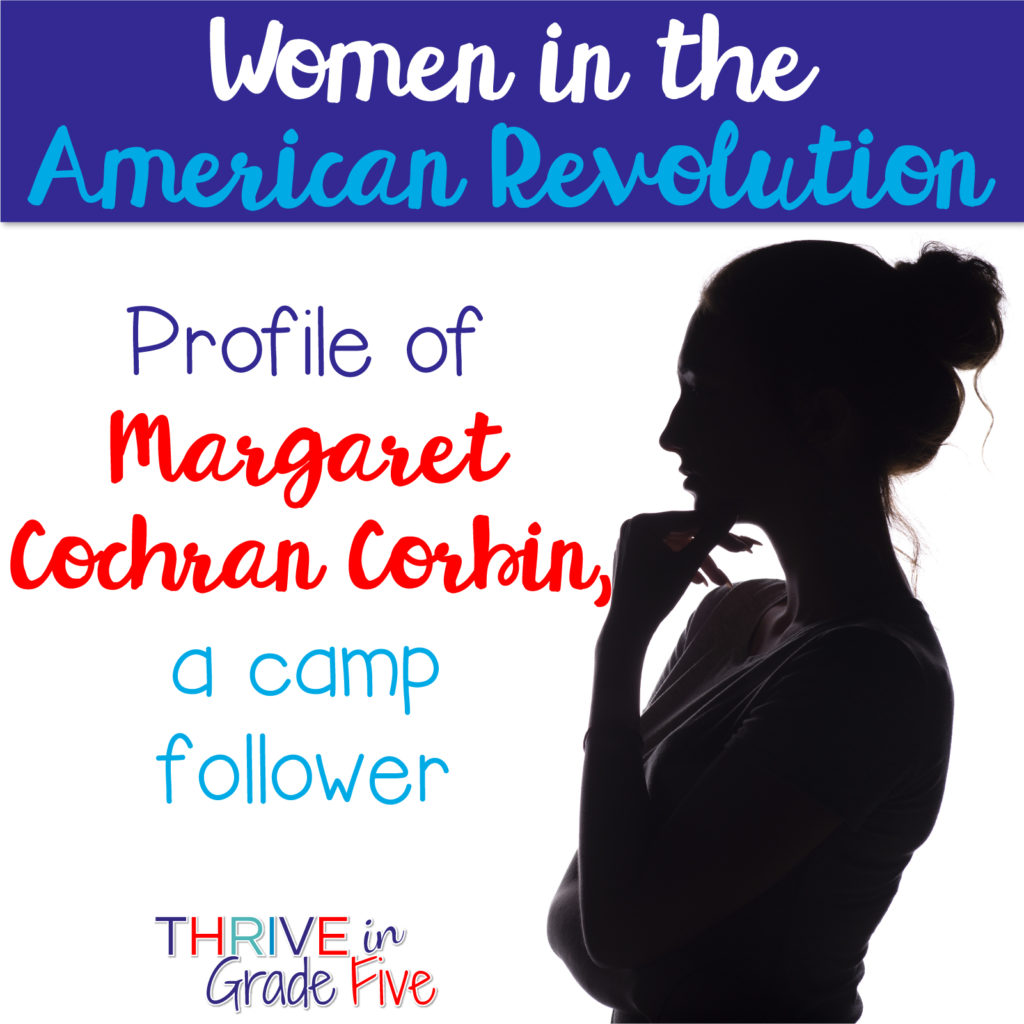
Profile of Margaret Cochran Corbin
Born in 1751, Margaret experienced family trauma early in her life. She became an orphan at the age of five and was adopted by an uncle.
As a young woman, Margaret married John Corbin, who later joined a Pennsylvania regiment. Refusing to remain at home alone, Margaret followed her husband and became a camp follower. She earned her keep by doing laundry, cooking, and tending to wounded soldiers.
In November of 1776, Margaret decided to dress as a male soldier and join her husband in battle. She helped him to load his cannon but sadly, her husband was killed in action.
Margaret boldly took over her husband’s position at the cannon and continued to fire against the British until she was injured.
The Continental Congress recognized Margaret’s service and awarded her a lifetime pension worth half of a man’s pension.
Enslaved Women During the American Revolution
Few stories and information about enslaved women during the American Revolution exist due to limited primary source records.
However, we must remember that they played a role in the Revolution despite having no choice in the matter.
I encourage you to check out the following two blog posts to help you teach slavery accurately and sensitively:
How to Teach 18th Century Slavery in Today’s Classroom
Teaching Slavery in Upper Elementary: An Interview with Scholar Richard Josey
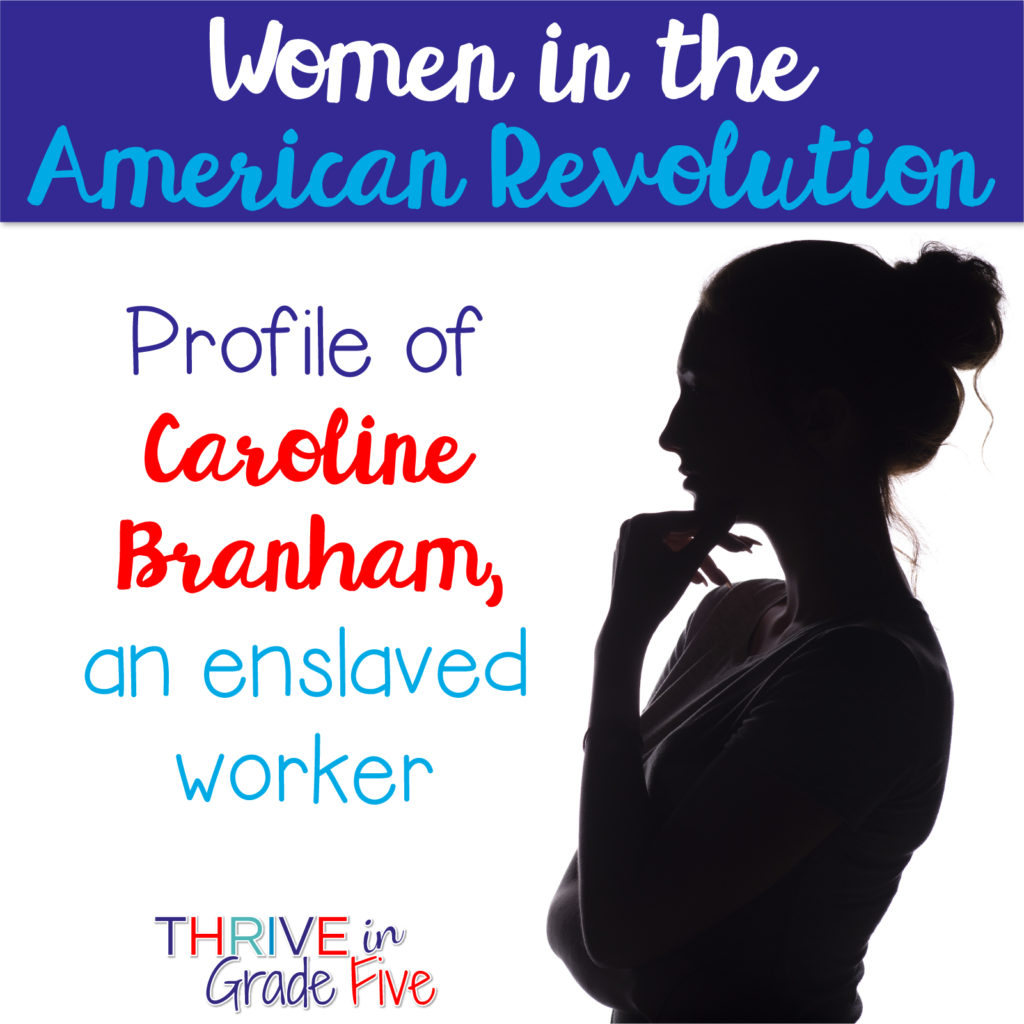
Profile of Caroline Branham
Born around 1764, Caroline was an enslaved maid in the home of George and Martha Washington.
She had a long workday, which included waking before sunrise to light fires, fetch clean water, empty used chamber pots, and light candles. She was expected to work after sunset preparing the bedchambers, cleaning from the day’s events, and catering to the needs of the Washington family and their constant stream of visitors.
Caroline married an enslaved man, Peter Hardiman, rented by George Washington. Together, Caroline and Peter had at least six children, possibly more.
While George Washington lay on his deathbed in December of 1799, Caroline stayed nearby in case her help was needed. She was one of four enslaved individuals in the room when Washington passed.
After the death of Martha Washington in 1802, Caroline and her children were inherited by one of Martha’s heirs. Fortunately, the family was able to stay together because Peter was also inherited by the same heir.
The Life of Caroline Branham – A short video from Mount Vernon
A free instructional PowerPoint?!? Yes, please!
If you’re interested, I have a free PowerPoint that I can send to your inbox. This is the presentation I use to teach about slavery at George Washington’s Mount Vernon. I feature three enslaved individuals in the PowerPoint, including Caroline and two others.
Slavery at George Washington’s Mount Vernon free PowerPoint
Meet Oney Judge
My students love the story of Oney (Ona) Judge because she successfully escaped and was never sent back to the Washington family.
Oney was born into slavery in George Washington’s household. She became Mrs. Washington’s personal servant as a teen and traveled frequently with her mistress.
While serving in the presidential household in Philadelphia, Oney escaped. The Washingtons tried to get Oney back but were unsuccessful.
This reading passage with comprehension questions teaches students about Oney’s story: Oney Judge: Runaway Slave History Snip-It
Female Spies During the American Revolution
Women were effective spies because military leaders, both patriot and British, viewed them as less-able to spy and pass information.
We certainly don’t like to acknowledge that women in the 18th Century were essentially second class citizens, however, this belief that women were not intelligent enough to spy helped them to listen in or pass information mostly undetected.
I’d love to share a highly-engaging American Revolution STEM project that I do with my students. I listed all of the instructions with pictures in this blog post: Engaging American Revolution Interdisciplinary Project
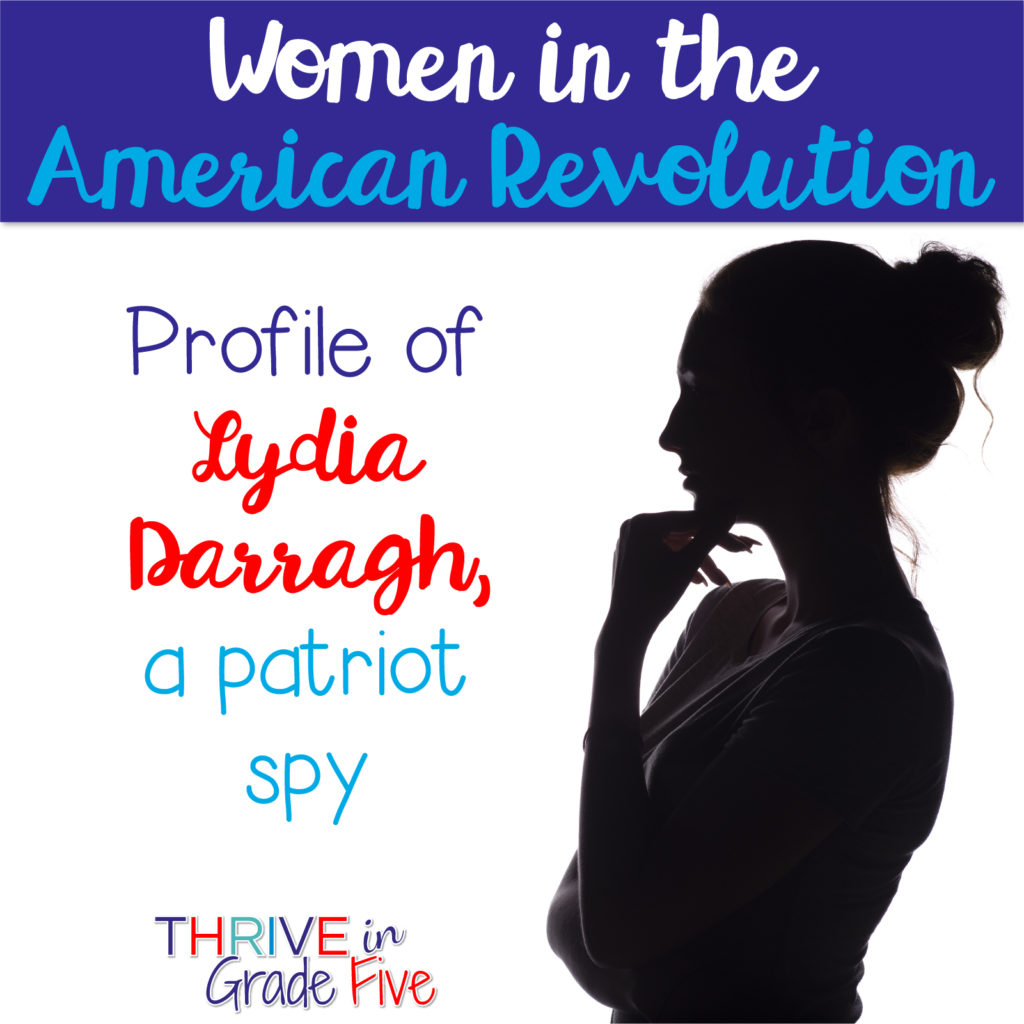
Profile of Lydia Darragh
Lydia Darragh was born in 1729 in Ireland. With her husband, she immigrated to Philadelphia and settled in a Quaker community.
Quakers were expected to remain neutral in the conflict between the colonies and England. However, the Darragh family secretly sided with patriots.
In 1777, British officials ordered the Darragh family to open their home for British meetings. Upon being told to stay away from the room where the officers were meeting, Lydia instead hid in a closet.
She bravely and creatively passed word to General Washington’s Army to warn of an impending surprise attack.
Fearless Women Who Took Action During the American Revolution
I love the stories of women who acted fearlessly during the American Revolution and made an difference.
Some women did relatively small but impactful things, like donating clothing from their shops or sharing the crops from their fields with hungry soldiers.
Other women did huge things, like helping their husbands on the battlefield or dressing as men to serve as soldiers, like Deborah Sampson.
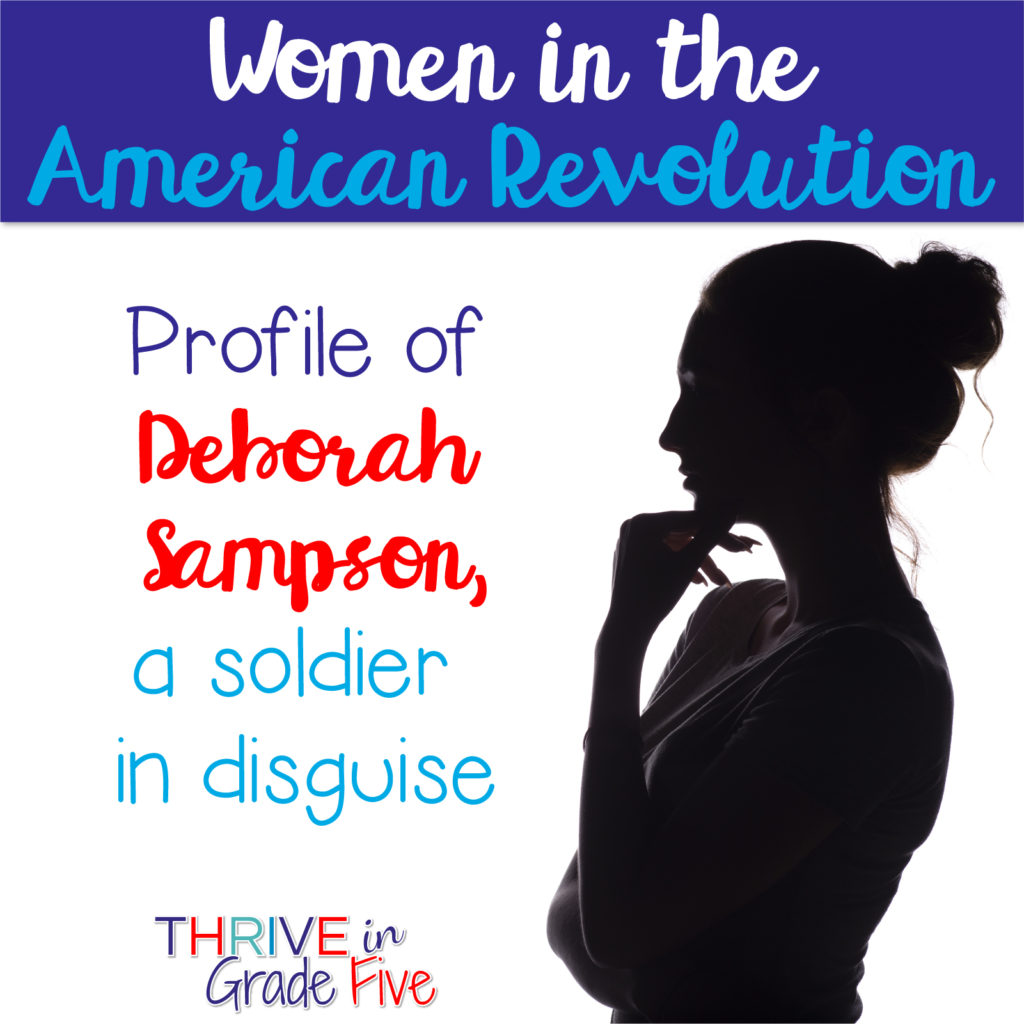
Profile of Deborah Sampson
Born in 1760, Deborah faced challenges during her childhood.
Her father disappeared at sea and her mother was unable to support the children, so Deborah was sent to live with another family as an indentured servant.
While serving the family she was bound to, Deborah read and educated herself. Once her indenture contract was complete, she worked as a teacher.
In 1782, Deborah took a huge risk when she joined the Continental Army disguised as a man. She engaged in all types of military activities just like any other male soldier.
Deborah managed to avoid her gender being revealed for more than two years. She received an honorable discharge from the Army and returned home to Massachusetts, where she married and raised a family.
Meet Nancy Hart
Deborah Sampson wasn’t the only brave woman in the American Revolution, of course. I want to share the fascinating story of Nancy Hart with you also.
Nancy was a tall, redheaded patriot living on the Georgia frontier.
Despite being illiterate and cross-eyed, she had excellent aim with her musket.
She is remembered for her fearless actions, including dressing as a man with special needs, allowing her to wander into British military camps to spy, and later hogtying a British spy before turning him over to patriot leaders.
However, Nancy’s most well-known act occurred after an angry British soldier killed her prized turkey and forced her to cook it. There’s more to the story but I don’t want to spoil the rest for you.
This resource contains Nancy’s full story and includes comprehension questions for students to answer. The Story of Nancy Hart – Sensational History Snip-Its Series.
I want to offer you a free no-prep resource for your students. Click this link to grab my American Revolution Women Quick Project for free. 🙂

This freebie contains:
- Student Instructions
- Profiles of 5 women from the American Revolution
- Student work page
- Grading sheet
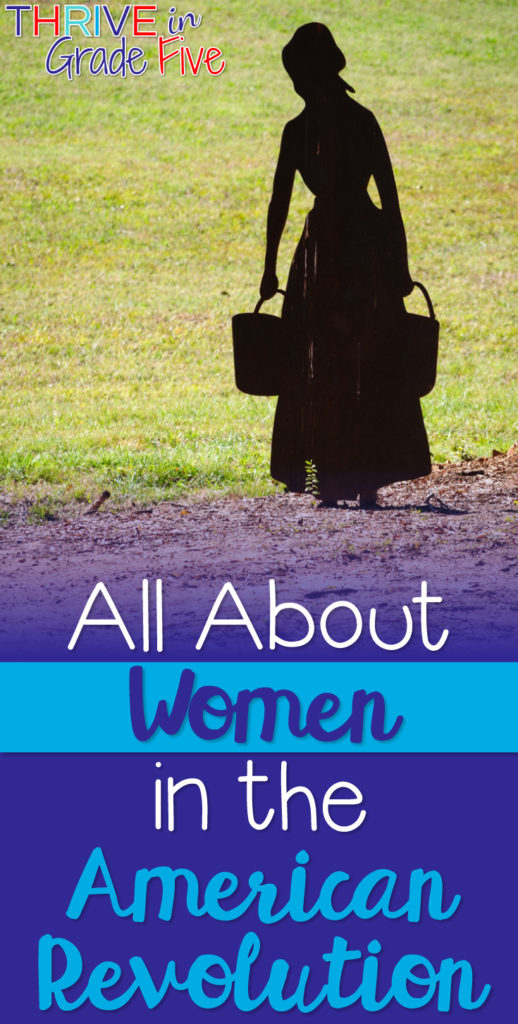
If you’d like to keep this blog post for later, simply save this pin to your teacher Pinterest board!
We need to share more stories of women in history, so I wrote a book to feature 50 amazing American women from early settlements through today! This book is perfect for students in grades 4-6:

* Please note that Thrive in Grade Five (Jenifer Bazzit) is a participant in the Amazon Services LLC Associates Program, an affiliate advertising program designed to provide a means for sites to earn advertising fees by advertising and linking to amazon.com. *

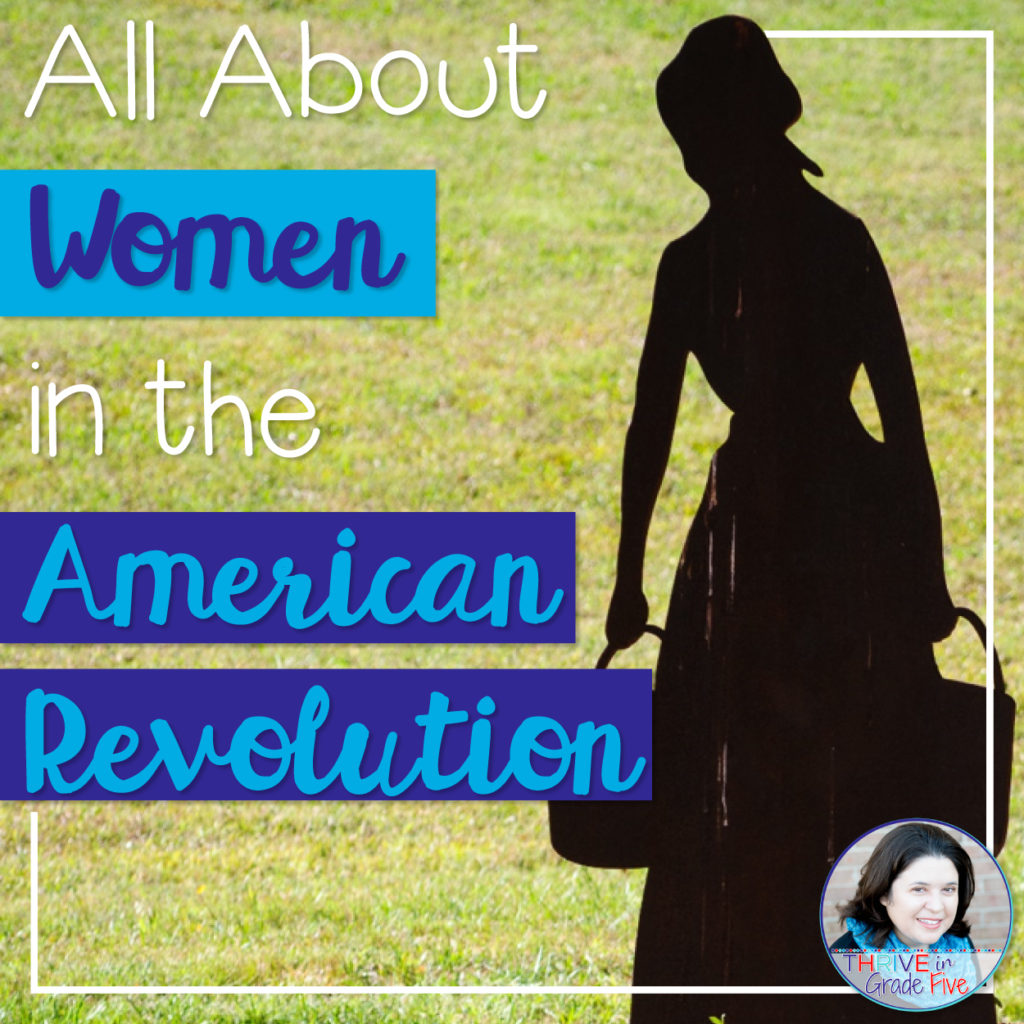





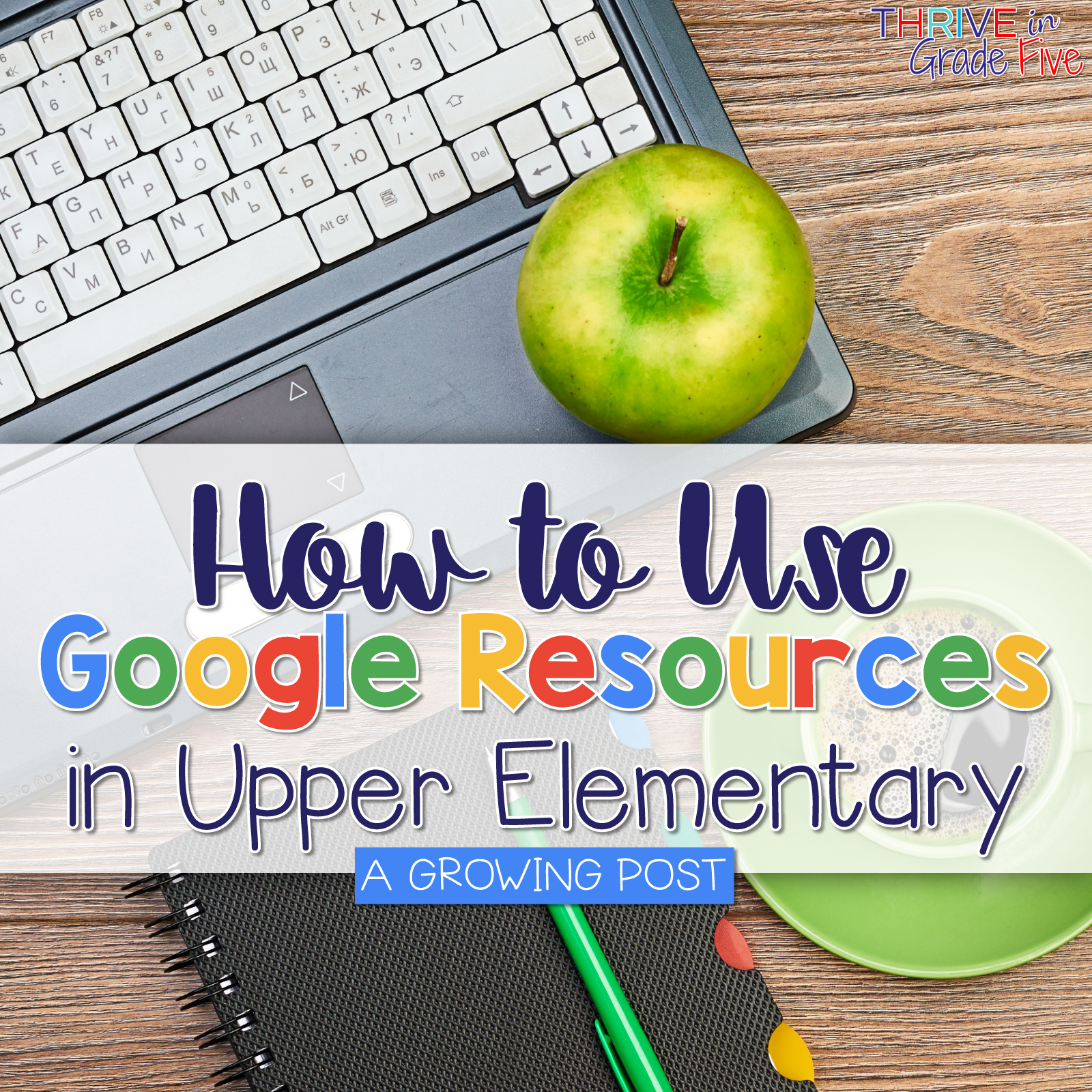
8 Comments
Great stuff! Thank you for sharing. I’m looking forward to expanding on my teaching of women in the Revolution.
You are very welcome, Laura! Thank you for taking the time to share!
Hi,
I’m a big fan of your blog and your material. Whenever I use your work, I know my students will be engaged and will have a memorable educational experience. Your students are very lucky!
Thank you so, so much, Miriam! Your kind words made my day 🙂
Great Blog. Thanks for sharing all this. It helped me with my daughter’s homework.
You are very welcome! Glad to help!
This is wonderful! Also, I just bought your book. Thank you!
Thank you so much, JoDee! I really appreciate that 🙂